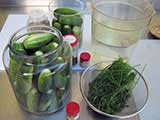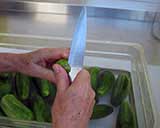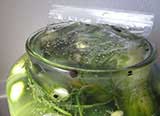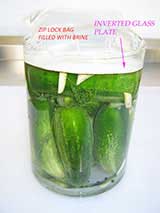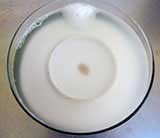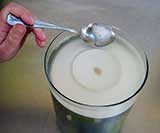Meats and Sausages
Homemade Fermented Pickles
The best quality fermented pickles are made a low salt brine without vinegar. Such fermented cucumbers are usually made at home and this is how they were always made in Europe and by early settlers who came from Germany and Eastern European countries. Sometimes pickles spoiled and had to be discarded which was not something that commercial producers liked. To cut down on those losses and to extend the life of the product vinegar was added to brine. This made production easier and safer but it adversely affected the taste of the product.
What follows is the traditional method of making fermented pickles.
Wash cucumbers of visible dirt but don't brush them off. There are some lactic acid bacteria present on the surface and they are needed to start fermentation. In the past, commercial producers did not wash cucumbers at all, but threw them into huge fermenting tanks. Remove all remnants of cucumber blossoms as molds and tissue softening enzymes are known to reside in those areas. You can cut about 1/16" (1.5 mm) off the ends of cucumbers, but scraping them off with a tip of a fingernail works fine.
The bag (plate) can be removed and the slime wiped off. Then the clean bag is reinserted again. This takes care of the slime. What is harder to control are the tissue softening enzymes which were produced by the yeasts. Those enzymes will continue working and the pickle will be softer. Very salty brines decrease yeast production, adding vinegar is another effective measure. Pasteurization is the most effective preventive measure as it will kill most microorganisms.

